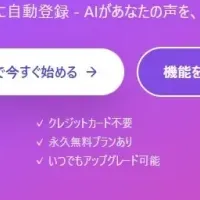
Residential HVAC Market Projected to Surge by USD 39.62 Billion from 2025 to 2029, Powered by Construction Demand and AI Insights
Understanding the Growth of the Residential HVAC Market
The residential HVAC (Heating, Ventilation, and Air Conditioning) market is poised for substantial growth, with an expected increase of USD 39.62 billion from 2025 to 2029. This growth is primarily spurred by escalating demand stemming from the construction industry and the growing influence of artificial intelligence (AI) on market dynamics. According to Technavio, a leading market research firm, this sector will witness a compound annual growth rate (CAGR) of approximately 8.1% during the forecast period.
Key Drivers of Growth
Several factors are contributing to the anticipated expansion of the HVAC market:
1. Construction Boom: The rapid development of residential buildings is driving the demand for HVAC systems. As new homes are being constructed, the need for efficient heating and cooling solutions is becoming paramount.
2. AI Integration: Technological advancements in AI are reshaping how HVAC systems operate and are maintained. AI-powered tools are enhancing the efficiency of these systems, thereby attracting more investments into energy-efficient solutions.
3. Consumer Trends: Increasing awareness of climate change and energy conservation is pushing consumers to opt for smarter, more sustainable HVAC solutions. The rising temperatures globally have also made air conditioners and heating equipment in high demand, especially in areas prone to extreme weather.
4. Government Regulations: Policy support aimed at reducing greenhouse gas emissions is steering the market towards products that utilize eco-friendly energy sources. Manufacturers are innovating their product lines to comply with these regulations, thereby driving market penetration of advanced HVAC systems.
Notable Trends Emerging in the Market
The HVAC market is undergoing a transformation fueled by several trends:
Smart Systems: The increase in the use of smart equipment, incorporating AI and automation, is changing how consumers interact with HVAC systems. Devices equipped with user-friendly interfaces and smart features such as sleep mode and automatic temperature adjustments are gaining popularity.
Energy Efficiency: With increasing energy costs, consumers are more inclined to invest in energy-efficient heating and cooling systems. HVAC manufacturers like Carrier Global Corp. and Daikin are at the forefront, developing technology solutions that enhance energy efficiency.
* Indoor Air Quality: The recent global health crisis has heightened awareness regarding indoor air quality. Systems that filter allergens and pollutants have become essential in many residential setups, leading to a surge in demand for advanced filtration systems.
Notable Companies in the Market
Several key players dominate the HVAC landscape, including:
- - Carrier Global Corp.
- - Daikin Industries Ltd.
- - Honeywell International Inc.
- - Mitsubishi Electric
Market Challenges
Despite robust growth prospects, the HVAC market faces significant challenges:
- - Supply Chain Disruptions: The ongoing impacts of global supply chain constraints, particularly in obtaining raw materials required for HVAC systems, pose hurdles for manufacturers.
- - Competitiveness and Innovation: As more players enter the market, there is constant pressure to innovate and meet changing consumer preferences.
- - Maintenance Complexity: The advancements in HVAC technology, particularly with AI integration, necessitate skilled labor for maintenance and repairs, which may not be readily available in some markets.
Conclusion
The residential HVAC market is on an upward trajectory, driven by a combination of rising consumer demand, AI-driven efficiencies, and macroeconomic trends like urbanization and policy support for green technologies. With key players investing heavily in innovative technologies, the market landscape is set for transformative changes in the coming years. Stakeholders are encouraged to stay informed about these developments to leverage emerging opportunities in this dynamic sector.
Topics Consumer Technology)










【About Using Articles】
You can freely use the title and article content by linking to the page where the article is posted.
※ Images cannot be used.
【About Links】
Links are free to use.